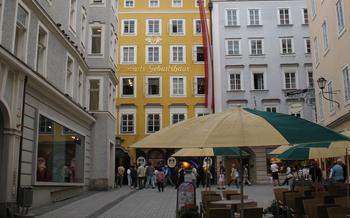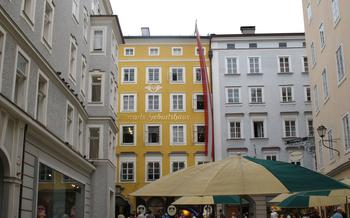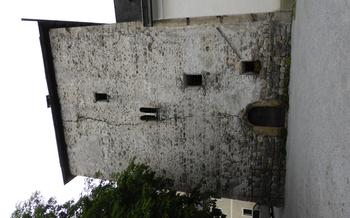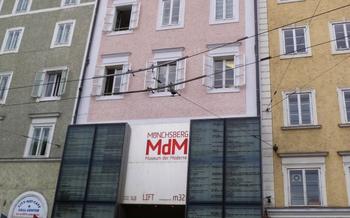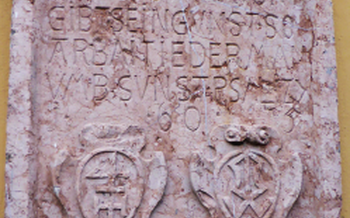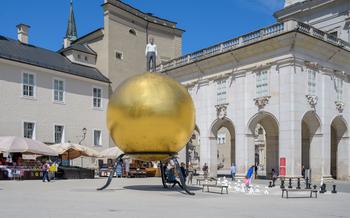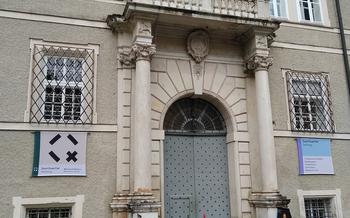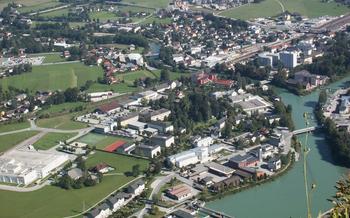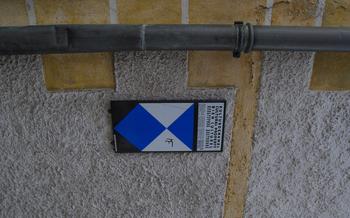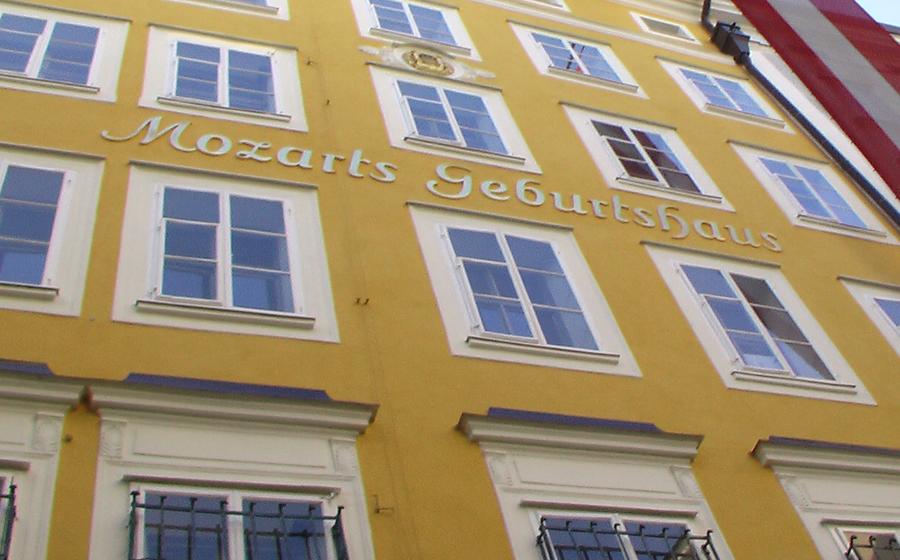
Mozart's Residence
- Mozart's Birthplace
- Mozart's Childhood Home
- Mozart's Residence
- Mozart's Final Resting Place
- Mozart's Music and Legacy
- Mozart's Influence on Salzburg
- Mozartkugeln: A Taste of Salzburg's Sweet Tradition
- Sound of Music Tour:
- Mirabell Palace and Gardens
- Salzburg Cathedral: A Witness to Mozart's Musical Genius
- Getreidegasse: A Stroll Through Mozart's Childhood Neighborhood
- Hohensalzburg Fortress: A Majestic Sentinel Over Salzburg
- Mozart Dinner Concert
Mozart's Birthplace
In the heart of Salzburg, nestled amidst the vibrant Getreidegasse, lies a historical gem that holds a special place in the world of music: Mozart's Birthplace. This unassuming yellow building, adorned with an elegant plaque, marks the birthplace of Wolfgang Amadeus Mozart, one of the most celebrated composers in history.
Step inside this three-story, 17th-century residence, and you'll embark on a journey through the early life of a musical prodigy. The museum, meticulously curated, offers a glimpse into Mozart's childhood and the nurturing environment that fostered his extraordinary talent.
Wander through the original family home, where Mozart spent his formative years, and marvel at the preserved artifacts that tell the story of his remarkable family. Admire the original musical instruments, personal belongings, and handwritten compositions that provide a tangible connection to Mozart's musical genius.
One anecdote that captures the essence of Mozart's childhood is the story of his father, Leopold, discovering his son's prodigious talent at the tender age of three. As Leopold played the violin, young Wolfgang would sit at the clavier, replicating the melodies with astonishing accuracy. This anecdote underscores the innate musicality that would define Mozart's life and legacy.
Mozart's Childhood Home
Located at 9 Getreidegasse in the heart of Salzburg, Mozart's Childhood Home is where the young prodigy spent his formative years from 1773 to 1780. This three-story building, now transformed into a museum, offers a glimpse into Mozart's early life and musical development.
Exhibits and displays within the museum showcase Mozart's childhood compositions, including his first symphony written at the age of eight. Visitors can also admire the original family piano, where Mozart practiced and composed some of his earliest masterpieces.
Personal stories and anecdotes about Mozart's childhood are brought to life through interactive exhibits and multimedia presentations. These stories reveal Mozart's close relationship with his father, Leopold, who recognized and nurtured his son's extraordinary talent.
The museum also highlights Mozart's early performances and travels, which took him to various European courts and cities. These experiences played a crucial role in shaping Mozart's musical style and paving the way for his future success as a composer and performer.
Mozart's Residence
Mozart's residence, located in the heart of Salzburg's Old Town, holds a significant place in the composer's life and career. From 1781 to 1787, Mozart lived in this elegant building, which served not only as his home but also as a hub for his musical activities and creativity. The residence, known as the "Mozart Wohnhaus," stands as a testament to Mozart's remarkable achievements during this period.
The building itself boasts a rich architectural history, dating back to the 17th century. Its elegant façade, adorned with intricate stucco work and delicate ornamentation, reflects the grandeur of the era. Inside, the residence features spacious rooms, high ceilings, and beautifully preserved period furniture, offering a glimpse into Mozart's domestic life.
During his time here, Mozart composed some of his most famous and beloved works, including the opera "The Marriage of Figaro," the piano concertos K. 450 and K. 451, and the string quartet K. 45The residence's intimate atmosphere and proximity to the city's cultural scene provided Mozart with the ideal environment for inspiration and creativity.
Mozart's residence was not merely a place of work but also a gathering place for friends, musicians, and patrons. Here, Mozart hosted musical soirées, performed his compositions, and engaged in lively discussions about music and art. The residence became a vibrant center of musical exchange and innovation, where Mozart's genius flourished and left an enduring mark on the world of classical music.
Mozart's Final Resting Place
St. Peter's Cemetery, nestled in the heart of Salzburg's historic district, holds a poignant significance as the final resting place of Wolfgang Amadeus Mozart. The composer, whose music continues to inspire and captivate audiences worldwide, was laid to rest in this serene cemetery on December 6, 1791, at the age of 3
The circumstances surrounding Mozart's death and burial were shrouded in mystery and controversy. His untimely demise, attributed to rheumatic inflammatory fever, left a void in the musical world that has never been filled. Ironically, the man whose compositions brought joy and solace to countless individuals was denied a proper burial befitting his genius.
Mozart's pauper's grave, initially unmarked and indistinguishable from those of his fellow departed, reflected the harsh realities of his final days. The lack of recognition and respect accorded to him at the time of his death stands in stark contrast to the immense admiration and reverence he receives today.
Over the years, efforts have been made to rectify this historical oversight. In 1859, a simple tombstone was erected to mark Mozart's grave, bearing the inscription "Wolfgang Amadé Mozart, born January 27, 1756, died December 5, 179" While the exact location of his remains within the cemetery remains uncertain, music enthusiasts from around the world make pilgrimages to St. Peter's to pay homage to the maestro who left an indelible mark on the world of classical music.
Despite the mystery and controversy surrounding his final resting place, Mozart's music lives on, transcending time and space to touch the hearts and souls of listeners everywhere. His legacy endures, a testament to his extraordinary talent and the enduring power of his compositions.
Mozart's Music and Legacy
Wolfgang Amadeus Mozart left an indelible mark on the world of classical music, composing over 600 works during his short lifetime. His compositions encompass a wide range of genres, including symphonies, concertos, operas, and chamber music. Mozart's music is characterized by its melodic beauty, harmonic complexity, and structural clarity. He had a unique ability to blend different musical styles and genres, creating a distinctive sound that was both innovative and accessible.
Mozart's operas are among his most celebrated works. His most famous operas include "The Marriage of Figaro," "Don Giovanni," and "The Magic Flute." These operas showcase Mozart's mastery of vocal writing, dramatic storytelling, and orchestral composition. Mozart's operas continue to be performed and enjoyed by audiences worldwide, and they have had a profound influence on the development of opera as an art form.
In addition to his operas, Mozart composed numerous concertos for various instruments, including the piano, violin, and clarinet. His concertos are known for their virtuosic solo writing and their brilliant orchestration. Mozart's concertos have become staples of the classical music repertoire and are frequently performed by soloists and orchestras around the world.
Mozart's symphonies are also highly regarded for their melodic invention, structural clarity, and emotional depth. His most famous symphonies include the "Jupiter" Symphony, the "Haffner" Symphony, and the "Prague" Symphony. Mozart's symphonies have had a profound influence on the development of the symphony as a musical genre, and they continue to be performed and enjoyed by audiences worldwide.
Mozart's Influence on Salzburg
Wolfgang Amadeus Mozart's profound impact on Salzburg's cultural and musical identity cannot be overstated. The city where he was born, raised, and spent his formative years remains inextricably linked to his legacy. Mozart's presence is felt throughout Salzburg, from the streets he walked to the venues where he performed. The city takes pride in celebrating his genius through various initiatives and events.
One of the most notable ways Salzburg honors Mozart's legacy is through the annual Mozart Festival Salzburg. This prestigious festival, held each summer, attracts renowned musicians and music lovers from around the world. The festival presents a wide range of performances, including concerts, operas, and recitals, showcasing Mozart's compositions and other works from the classical repertoire.
Beyond the festival, Mozart's influence is woven into the fabric of Salzburg's cultural landscape. Numerous statues, plaques, and memorials pay tribute to the composer throughout the city. Visitors can explore Mozart-related landmarks such as his birthplace, childhood home, and final resting place. The city also hosts regular concerts, exhibitions, and workshops dedicated to Mozart's life and work.
Furthermore, Salzburg's musical institutions, including the Salzburg Mozarteum Orchestra and the Mozarteum University Salzburg, continue to uphold Mozart's legacy. These institutions offer educational programs, research opportunities, and performances that promote the study and appreciation of Mozart's music.
In essence, Mozart's influence on Salzburg is pervasive and enduring. The city embraces its role as the birthplace and home of one of the greatest musical geniuses in history, ensuring that his spirit lives on through its cultural traditions, events, and institutions.
Mozartkugeln: A Taste of Salzburg's Sweet Tradition
Among the many delectable treats that Salzburg offers, the Mozartkugel stands out as a culinary icon, embodying the city's rich musical heritage and sweet tooth. These exquisite chocolate confections, named after the beloved composer Wolfgang Amadeus Mozart, have become synonymous with Salzburg and are a must-try for any visitor.
The history of the Mozartkugel dates back to the early 19th century when confectioner Paul Fürst created this unique confection in honor of Mozart. Fürst's creation consisted of a smooth, velvety center of pistachio marzipan encased in a layer of dark chocolate and topped with a signature silver foil bearing Mozart's likeness.
Over the years, the Mozartkugel has become a beloved symbol of Salzburg, enjoyed by locals and tourists alike. The original Fürst Mozartkugel remains a popular choice, but numerous other variations and brands have emerged, each offering its unique take on this classic treat.
To experience the authentic taste of a Mozartkugel, visit one of Salzburg's many confectionery shops, where you can witness the meticulous craftsmanship involved in their creation. You can also find Mozartkugeln in souvenir shops and gift stores throughout the city, making them an ideal gift for friends and family back home.
Whether you savor them as a sweet treat or indulge in a box as a souvenir, the Mozartkugel is a delicious way to celebrate the legacy of Mozart and immerse yourself in Salzburg's culinary delights.
Sound of Music Tour:
Dive into the enchanting world of the Sound of Music with a captivating tour through Salzburg, the city that served as the backdrop for this beloved film. Relive iconic moments as you visit filming locations that have become synonymous with the movie's magic. Step into the Mirabell Gardens, where Julie Andrews danced and sang "Do-Re-Mi" amidst blooming flowers. Admire the grandeur of Leopoldskron Palace, which played the role of the Von Trapp family home.
Embark on a picturesque boat ride across Lake Wolfgang, just like the Von Trapps did in the film's opening scene. Gaze upon the majestic Untersberg mountain range, providing a breathtaking panorama that inspired the film's memorable musical numbers. Along the tour, you'll learn fascinating behind-the-scenes stories and anecdotes about the making of the film, immersing yourself in the history and legacy of the Sound of Music.
Whether you're a lifelong fan of the movie or simply seeking a delightful exploration of Salzburg's charms, the Sound of Music tour promises an unforgettable experience, allowing you to relive the magic and emotions of this timeless classic in the very city where it all began.
Mirabell Palace and Gardens
Located in the heart of Salzburg, the Mirabell Palace and its stunning gardens offer a picturesque backdrop that is intrinsically linked to the life of Wolfgang Amadeus Mozart. Built in the 17th century as a summer residence for the Prince-Archbishop of Salzburg, the palace exudes an aura of elegance and grandeur. Mozart's father, Leopold, held the position of court composer for the Prince-Archbishop, and the family resided in a small apartment within the palace grounds. The young Mozart spent many happy hours exploring the palace's lush gardens, which served as his playground and inspiration for his musical compositions.
The Mirabell Gardens, with their intricate geometric patterns, blooming flower beds, and cascading fountains, are a sight to behold. Mozart's music seems to come alive as you stroll through the gardens, imagining the young composer finding solace and creativity amidst the natural beauty. The Pegasus Fountain, adorned with a majestic statue of the winged horse, is a particularly iconic landmark within the gardens. It is said that Mozart would often sit by the fountain, lost in contemplation, as the water's gentle melody mingled with the strains of his musical genius.
Today, the Mirabell Palace serves as a cultural center, hosting concerts, exhibitions, and other events. The palace's interior is equally impressive, with its grand Marble Hall, adorned with intricate frescoes and sculptures, and the sweeping Grand Staircase, which has witnessed countless footsteps throughout history. Visitors can explore the palace's opulent rooms, each with its own unique story to tell, and soak in the atmosphere of Mozart's time.
Salzburg Cathedral: A Witness to Mozart's Musical Genius
Salzburg Cathedral holds a significant place in the life and work of Wolfgang Amadeus Mozart. As the seat of the Archbishop of Salzburg, the cathedral was the central religious and spiritual institution in the city. Mozart had a deep connection to the cathedral, both as a performer and as a composer.
From a young age, Mozart displayed exceptional musical talent. He was appointed as a court musician at the age of 14 and began performing regularly at the cathedral. Mozart's compositions, including masses, vespers, and other sacred works, were often premiered in the cathedral, receiving acclaim for their beauty, complexity, and emotional depth.
One of the most notable events in Mozart's relationship with Salzburg Cathedral was the performance of his "Coronation Mass" in 177Composed for the Easter Sunday service, the mass was a grand and elaborate work that showcased Mozart's mastery of counterpoint and orchestration. The performance was a resounding success, further establishing Mozart's reputation as a leading composer of his time.
Mozart's relationship with the cathedral was not always smooth. He often clashed with the Archbishop, who was known for his strict and conservative views on music. Mozart's desire for artistic freedom and innovation led to tensions with the Archbishop, eventually prompting Mozart to leave Salzburg in 178
Despite the challenges, Mozart maintained a deep fondness for Salzburg Cathedral. He continued to perform and compose sacred music throughout his life, drawing inspiration from the grandeur and spirituality of the cathedral. Salzburg Cathedral remains an important symbol of Mozart's legacy, a place where his music continues to resonate and inspire.
Getreidegasse: A Stroll Through Mozart's Childhood Neighborhood
In the heart of Salzburg's Old Town, nestled amidst charming boutiques, art galleries, and traditional restaurants, lies Getreidegasse, a historic shopping street that holds a special significance in the life of Wolfgang Amadeus Mozart. As the birthplace of the musical prodigy, Getreidegasse offers a unique glimpse into Mozart's childhood and family roots.
Strolling along the cobbled street, visitors can admire the colorful facades of centuries-old buildings, many of which have preserved their original architectural features. Mozart's birthplace, located at number 9, is a popular attraction for music enthusiasts and tourists alike. The yellow-painted house with its wrought-iron sign proudly proclaims its connection to the legendary composer.
Inside the Mozart Geburtshaus (Mozart's Birthplace), visitors can embark on a journey through the early life of the young genius. Exhibits showcase family portraits, personal belongings, and original manuscripts, providing insights into Mozart's childhood and the nurturing environment that fostered his musical talent.
As you wander further down Getreidegasse, you'll encounter other notable landmarks associated with Mozart. The Hagenauer House, where Mozart's sister Nannerl was born, stands as a testament to the family's deep roots in Salzburg. The Mozart Apotheke (Mozart Pharmacy), established in the 13th century, is another historic gem that evokes the atmosphere of Mozart's time.
Whether you're a music lover, a history buff, or simply a curious traveler, Getreidegasse offers a delightful blend of history, culture, and charm. As you explore this vibrant street, you'll feel a palpable connection to the legacy of Wolfgang Amadeus Mozart, whose spirit continues to resonate throughout the city of Salzburg.
Hohensalzburg Fortress: A Majestic Sentinel Over Salzburg
Towering high above the city, Hohensalzburg Fortress stands as a testament to Salzburg's rich history and its connection to Mozart. Constructed in the 11th century, this mighty fortress has played a crucial role in defending the city against invaders and served as a residence for the Archbishops of Salzburg, who ruled over the region for centuries.
During Mozart's lifetime, Hohensalzburg Fortress was a place of both awe and inspiration. The young composer would often gaze upon its imposing walls, marveling at its grandeur and imagining the tales of bravery and intrigue that unfolded within its stone chambers. The fortress's commanding presence left an indelible mark on Mozart's soul, influencing his music and shaping his sense of place and identity.
Today, Hohensalzburg Fortress is a popular tourist attraction, offering visitors a glimpse into the past and a chance to experience the grandeur of Mozart's time. Guided tours take visitors through the fortress's many rooms and courtyards, revealing its fascinating history and showcasing its impressive architecture. From the Golden Hall, with its ornate ceiling and glittering chandeliers, to the Prince's Chambers, where Mozart himself once performed, the fortress offers a treasure trove of historical and cultural wonders.
For those seeking a truly unforgettable experience, a visit to the fortress's museum is a must. Here, visitors can delve deeper into the history of Salzburg and the fortress, exploring exhibits that showcase medieval weaponry, armor, and artifacts from Mozart's era. The museum also features interactive displays that bring the fortress's past to life, allowing visitors to experience the sights and sounds of a bygone era.
Whether you're a history buff, a music lover, or simply someone who appreciates stunning views, Hohensalzburg Fortress is a must-visit destination in Salzburg. Its towering presence, rich history, and connection to Mozart make it a truly unique and unforgettable experience.
Mozart Dinner Concert
One of the most immersive and enchanting ways to experience Mozart's music is by attending a Mozart Dinner Concert. Held in the grand and historic halls of the Baroque palaces or concert halls in Salzburg, these concerts offer a delightful combination of culinary indulgence and musical excellence.
As you savor a delicious multi-course meal inspired by the era of Mozart, you will be serenaded by talented musicians performing some of the composer's most beloved works. The candlelit ambiance, elegant attire, and exquisite music create an unforgettable atmosphere that transports you back to Mozart's time.
The musical program typically includes a selection of Mozart's أشهر compositions, such as his Eine Kleine Nachtmusik, The Marriage of Figaro overture, and arias from his operas. The performances are often accompanied by historical commentary and anecdotes, providing insights into Mozart's life and the context of his music.
Whether you are a seasoned Mozart enthusiast or simply seeking a unique and memorable evening in Salzburg, a Mozart Dinner Concert is an experience not to be missed. Advance reservations are highly recommended, especially during the peak tourist season.
